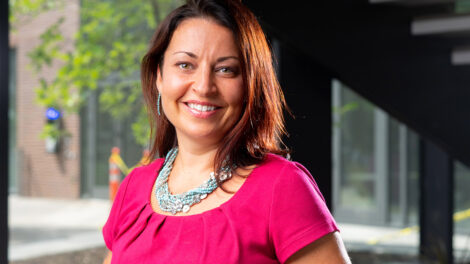Reintroducing water-cleansing mussels to Bushkill Creek
By Bryan Hay
In hip waders and water shoes, Prof. Meg Rothenberger ’02 and Eurnett Christopher ’25 step gingerly into a morning chilled, 55-degree toe-numbing Bushkill Creek, strands of smoky fog clinging above the quietly moving water.
Video by Olivia Giralico
Searching the stone-covered creek bed for specific and vital bivalves placed in the creek earlier this summer, Rothenberger reaches into the silt and pulls out a fist-sized alewife floater, carefully inspecting its health, size, and signs of breeding. About half of the planned 5,000 alewife floaters and eastern pondmussels have been reintroduced this summer in the creek bed, a key part of the multiyear Lafayette-supported restoration of the Bushkill led by Wildlands Conservancy.
Reintroduction of freshwater mussels began in earnest this year with removal of a series of dams that for a century had impeded the egress of the water-cleansing bivalves into the creek. A College-owned dam, first and most critical in the series of dams upstream of the confluence of the Bushkill and the Delaware River, was removed last summer, followed by two others since then.
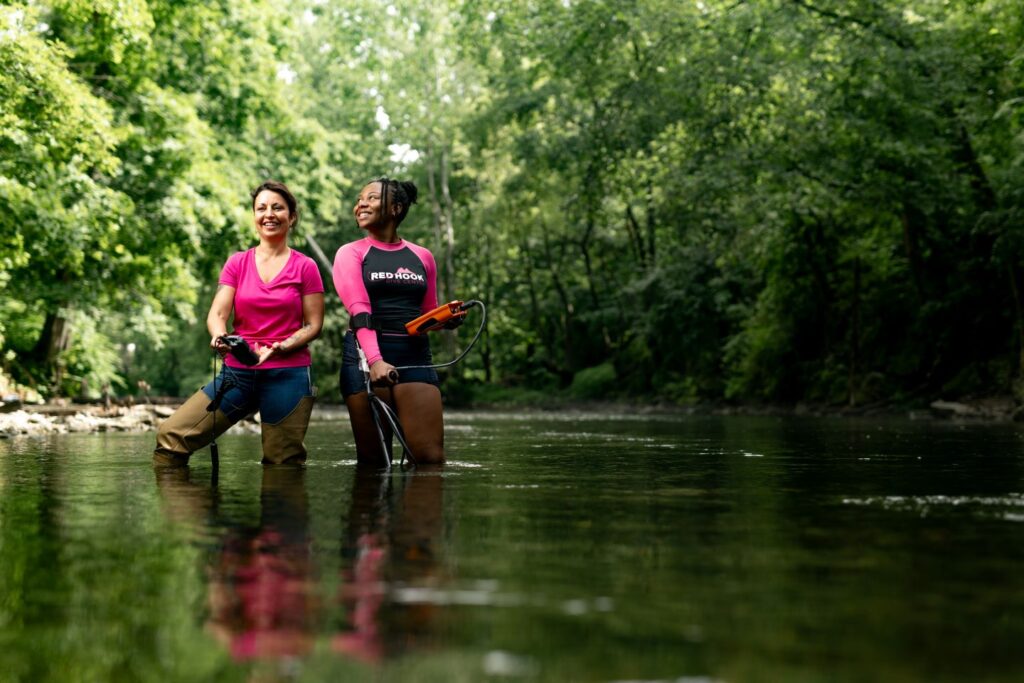
Prof. Meg Rothenberger ’02 and Eurnett Christopher ’25 working together to reintroduce freshwater mussels in Bushkill Creek. | Photo by Adam Atkinson
“They create habitat. They’re kind of like a freshwater version of coral reefs, creating habitat for many other species in the creek,” says Rothenberger, professor of environmental science and studies, noting how a single freshwater mussel can filter 10 gallons of water or more a day, using their gills to remove dirt, algae, and other pollutants. These are tough, hardworking blue-collar mussels, not the tender harvested saltwater kind that you’ll find steamed in garlic and white wine at a restaurant.
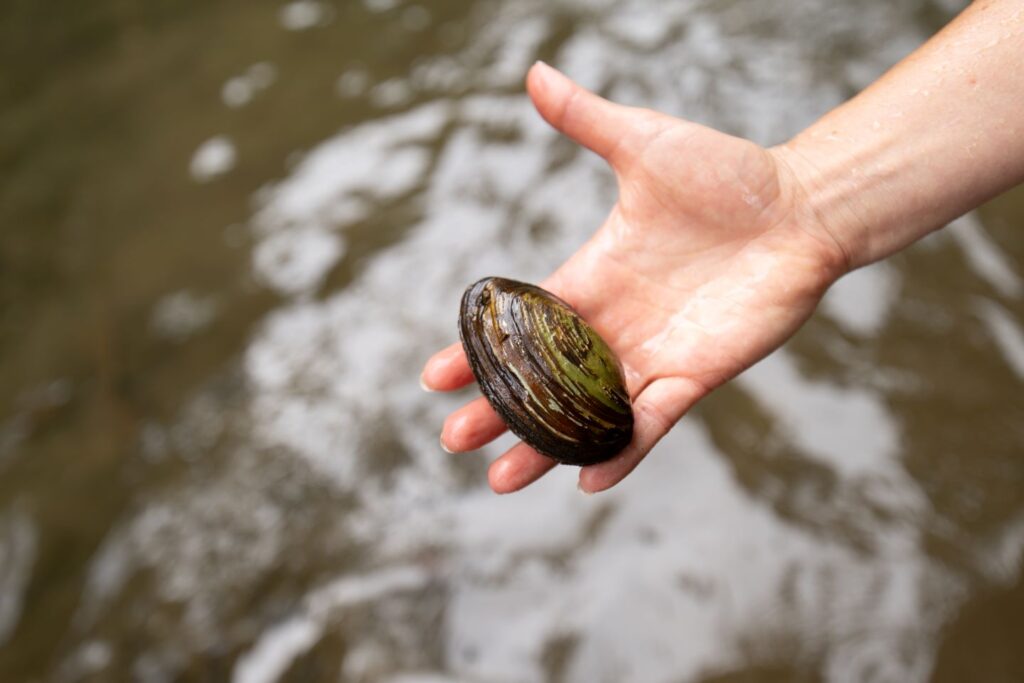
An alewife floater, one of the freshwater mussel species being reintroduced into the Bushkill Creek. | Photo by Adam Atkinson
Rothenberger and Christopher (environmental science major, data science minor) have been working together in the creek since last spring, hoping to find signs that the placement of the mussels is becoming sustainable.
Using a bathyscope, which resembles a glass-bottom cone, to isolate areas of the creek bed, Rothenberger and Christopher scan the shallow mud and sand creek bed to look for mussels placed earlier this summer. With dark gray shells, mussels blend in with other rocks and stones, but many of them have been tagged with transponders, making it easier to locate them.
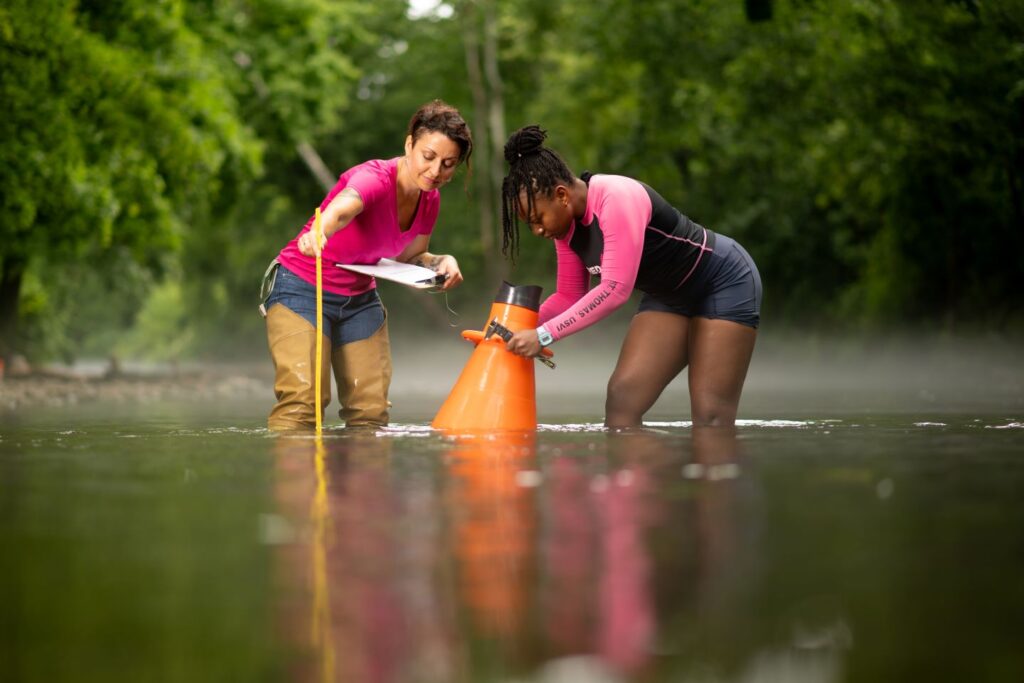
Prof. Meg Rothenberger ’02 and Eurnett Christopher ’25 use a a bathyscope to isolate areas of the creek bed. | Photo by Adam Atkinson
“We hope that, with the quantitative sampling, we’ll come across babies,” Rothenberger says, scooping up another healthy alewife floater. “The females put their eggs on their gill mantle. You actually see that. We know what time of year they breed, from about May to October. That’s when we can start looking. Some species of freshwater mussels can live up to 200 years. People think they’re boring, but they’re really cool.”
Mussels were once widely distributed, beyond and including the Bushkill Creek.
“About 70% of mussel species in North America are threatened with extinction, and they are the most threatened animal group in the world because of loss of habitat and dams,” Rothenberger says.
From St. Thomas in the U.S. Virgin Islands, Christopher grew up surrounded by water and coral reefs. She easily relates to the importance of her work with Rothenberger restoring mussels.
“I always think how unique this is to Lafayette, because this creek is close to our campus home,” she says. “Many of us walk to the creek to adore nature. That’s what makes it even more special, the fact that it’s so close and so vital to our ecosystem. I love coming here with my friends. We just hang out by the creek, and we play in the water. This area is part of the Lafayette community.”
After Lafayette, Christopher hopes to combine her longtime interests in marine science with data science to work on coral conservation.
Working to improve the health of Bushkill Creek has been part of Rothenberger’s Lafayette journey ever since her days as a student here. She delights in sharing her experiences and knowledge with students.
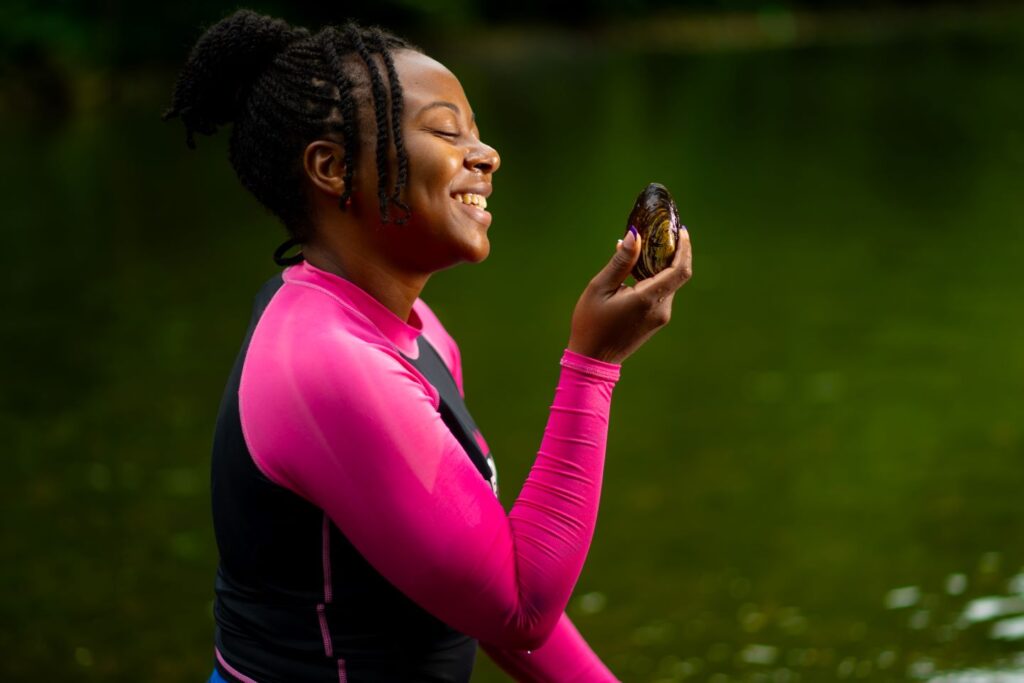
Eurnett Christopher ’25 examines a freshwater mussel. | Photo by Adam Atkinson
“There are times when I’m out in the field with the students, and I can’t believe this is my job,” she says. “I love playing in the creek and playing with frogs and looking for mussels as part of my research. But watching how much my students enjoy the experiences here is just as meaningful. It’s so gratifying to see the transformation of knowledge and the growing confidence in Eurnett, who’s been with me since she was a freshman.
“I had these experience when I was a student here,” Rothenberger reflects. “I worked with Dr. Lorraine Mineo on the Bushkill Creek. And my thesis was on the Bushkill, so there’s a great symmetry. Years later, I’m still doing the same thing and loving every minute of it.”

